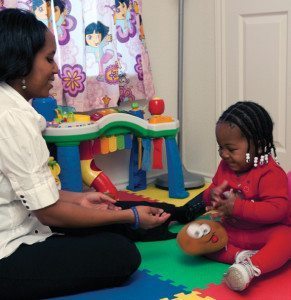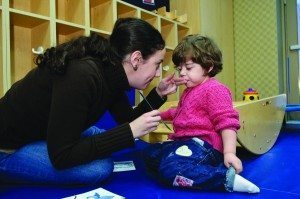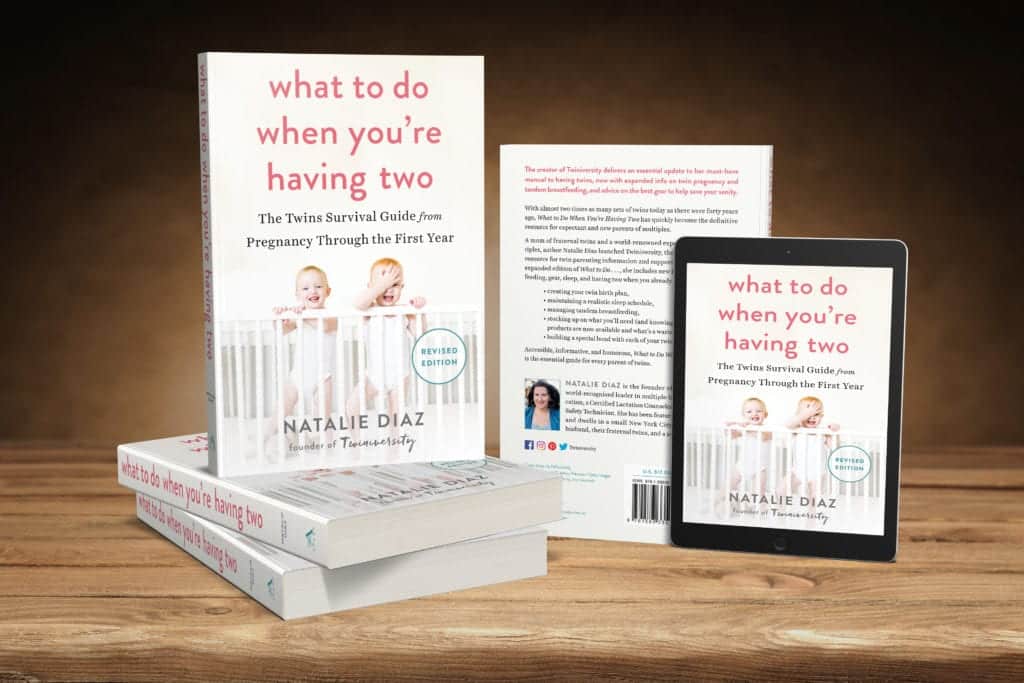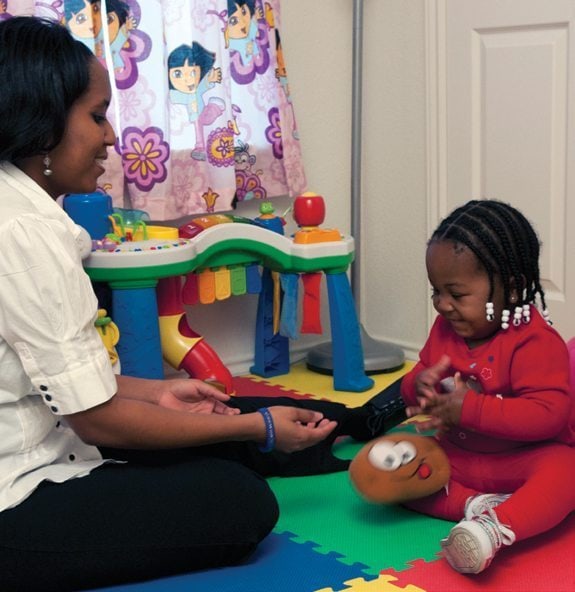Last updated on May 7th, 2024 at 07:45 am
About five weeks into our quadruplets’ NICU stay, a routine MRI revealed a grade I bleed for baby A and white matter trauma for baby B. Our neonatologist spent time explaining potential implications, among them, possible learning disabilities and developmental delays. Furthermore, there were no treatment options for either of the babies while in utero. We faced a “wait and see” approach. These were not things I wanted to hear.
After going through all the scenarios, he paused and asked, “Do you know the single most important factor in positive outcomes?” My mind was blank; I shook my head, “No.” He proceeded to say something simple, that I knew deep in my heart — “parental involvement.” Those words stuck with me, and I think of them almost daily. Medical tests and screenings could help us glean information about how our babies may function in the future, but our involvement mattered above all.

When the joyous moments of NICU discharge approached, our nurses referred each of the babies for Early Childhood Intervention (ECI) evaluations. Since the babies had not even reached their due date, developmental delays were not yet apparent. Instead the referrals were proactive, with the intent of catching any delays or concerns immediately.
Thankfully, ECI conducts evaluations, and provides services in the child’s “natural environment”. In our case, that was home, and I did not have to haul four tiny babies to a clinic. WHEW!!! Because our babies were infants, the initial evaluation primarily consisted of parent interview questions regarding prenatal care and medical history. It was a totally painless process. In fact, after spending many weeks in the NICU, I rattled off each baby’s medical history with ease.

Due to prematurity and low birth weight, all four of our babies qualified for services after their initial evaluation. Quite honestly, I wasn’t sure what therapy would entail for infants who were barely past their due date, but I knew early intervention and our involvement was critical. In the beginning, the focus was on feeding and sleeping since that’s what infants are expected to do. Our Occupational Therapist helped us transition the babies from side laying feeds, manage colic and reflux, and to recognize when to change bottle nipple levels. Our case manager gave us tips on getting formula supplements from local representatives and helped us advocate for our babies in the pediatrician’s office.
Throughout the babies’ first year of life, our team of therapists and service providers worked with me to recognize what milestones were expected and learn ways to help the babies achieve them. As the babies grew, our therapists worked directly with the babies, modeling strategies I could implement later. Sometimes, I found our therapists as a source of reassurance that I was on the right track and was doing proactive things for the babies. I always appreciated hearing therapists tell me I did something right, especially during times when I felt overwhelmed by having multiples.
It didn’t take long for me to understand and appreciate the consultative model used by ECI. Two of the reasons ECI was established were to “enhance the development of infants and toddlers with disabilities and to enhance the capacity of families to meet their child’s needs.” In essence, ECI therapists and service providers work to give parents and caregivers the tools necessary to help the child make progress, and to understand how to best meet their child’s needs. Providing services for a specific amount of time weekly or monthly is helpful, but unlikely to help the child make significant long term gains.

However, when those who spend the lion’s share of time with the child utilize the same strategies and techniques as service providers, the gains are often immense. In our case, two babies were discharged by their first birthday because they no longer demonstrated delays. The other two continued receiving therapy, and to my delight our therapists kept a watchful eye on the two no longer receiving services. Our experience with ECI has been extremely positive, and we encourage others with any concerns about their child’s development to make a referral immediately.
If your baby is under age three, and you have concerns regarding his development due to prematurity, or for any reason, don’t hesitate to make a referral for an ECI evaluation. Many primary care physicians refer parents, but a physician’s referral is not necessary for an evaluation. Parent referrals are accepted. There is no reason to worry about cost because evaluations are provided at no cost to the family. In the event that your child is found eligible for services, there is still no reason to fret about cost. ECI is able to bill private insurance or Medicaid for services provided. If there are costs beyond what insurance covers, a “sliding scale” system determines the family co-pay based upon family size and income. To put it in perspective, when all four of our babies received therapy we paid only $10 per month for all four. Unless our family circumstances change, our cost share remains $10 per month regardless of how many services we receive or how many children receive services. Incredible! The idea is that cost does not prevent families from seeking and receiving services.
For further details regarding Early Childhood Intervention, please visit The National Dissemination Center for Children with Disabilities at https://nichcy.org/babies/overview and visit the Early Childhood Technical Assistance Center at https://ectacenter.org/contact/ptccoord.asp which maintains a listing for contact information by state.

Amber Shawver and her husband, George, are the proud parents of girl-boy-girl-boy quadruplets who debuted in 2012. Amber draws from her experiences working in childcare settings and as a school based behavioral consultant to manage raising quadruplets at home. Amber continues to practice school psychology part-time in an urban school district. She chronicles life raising quadruplets at Four to Adore. You can also find her on Facebook, Pinterest, and Twitter.
Are You a New Twin Parent?
Check out Natalie Diaz’s book:
“What To Do When You’re Having Two
The Twin Survival Guide From Pregnancy Through the First Year”

In What to Do When You’re Having Two: The Twins Survival Guide from Pregnancy Through the First Year, national twins guru and founder of Twiniversity (and twin mom herself!) Natalie Diaz provides a no-holds-barred resource about life with twins, from pregnancy and birth all the way through your duo’s first year of life.
Accessible and informative, What to Do When You’re Having Two
is the must-have manual for all parents of twins.







